iXsystems TrueNAS Mini X+ Performance
This is a section that became wildly complex in the first draft. TrueNAS Core is a FreeBSD ZFS-based solution. As a result, we have dimensions here such as drives used (WD Red Plus), drive configuration in ZFS, caching drives, and more. We also have CPU/ network versus disk performance, along with protocols such as NFS, iSCSi, and SMB.
In the end, we decided to simplify this section. We are going to focus on CPU performance since that is a key selling point of this type of NAS and allows one to compare to other content on STH. We are also going to discuss some use cases we have been developing for storage testing.
TrueNAS Mini X+ CPU Performance
Since our test suite runs on Linux, we installed Ubuntu in one of the 2.5″ SSD bays for our CPU testing.
Python Linux 4.4.2 Kernel Compile Benchmark
This is one of the most requested benchmarks for STH over the past few years. The task was simple, we have a standard configuration file, the Linux 4.4.2 kernel from kernel.org, and make the standard auto-generated configuration utilizing every thread in the system. We are expressing results in terms of compiles per hour to make the results easier to read:
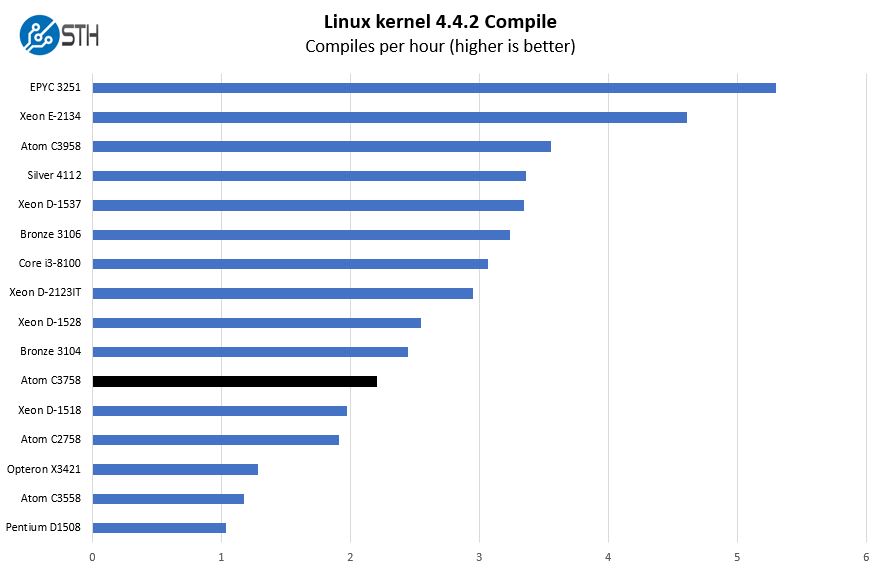
The overall performance here is very good for the Atom CPU. It plays at the lower-end of the Xeon D-1500 series but above the Opteron X3421 found in the older HPE ProLiant MicroServer Gen10.
7-zip Compression Performance
7-zip is a widely used compression/ decompression program that works cross-platform. We started using the program during our early days with Windows testing. It is now part of Linux-Bench.
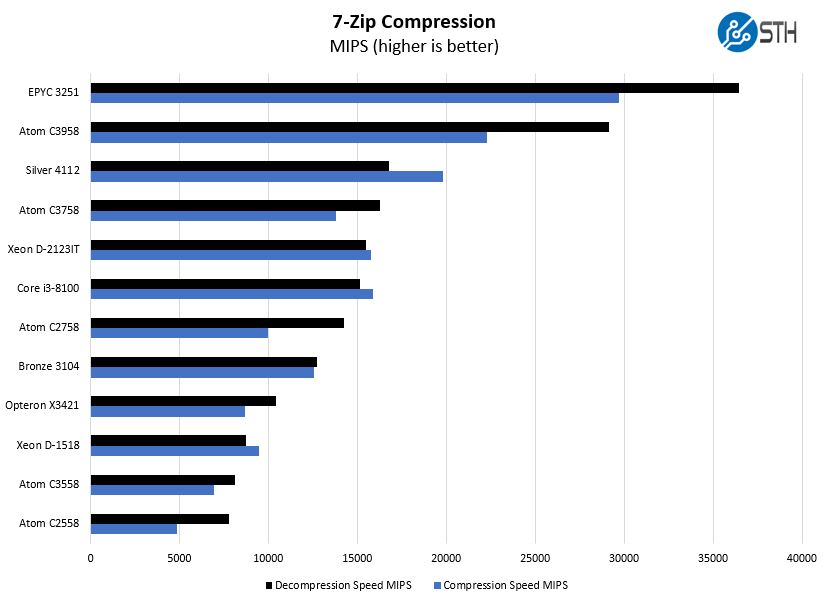
We asked the iXsystems folks why they are using Atom over AMD EPYC 3000 and we were told they have not validated platforms like the Supermicro M11SDV-4C-LN4F yet, so we are going to omit those from the list. We have seen the EPYC systems working, but there is a difference between a well-supported pre-built platform and using hardware that has not been vetted.
OpenSSL Performance
OpenSSL is widely used to secure communications between servers. This is an important protocol in many server stacks. We first look at our sign tests:
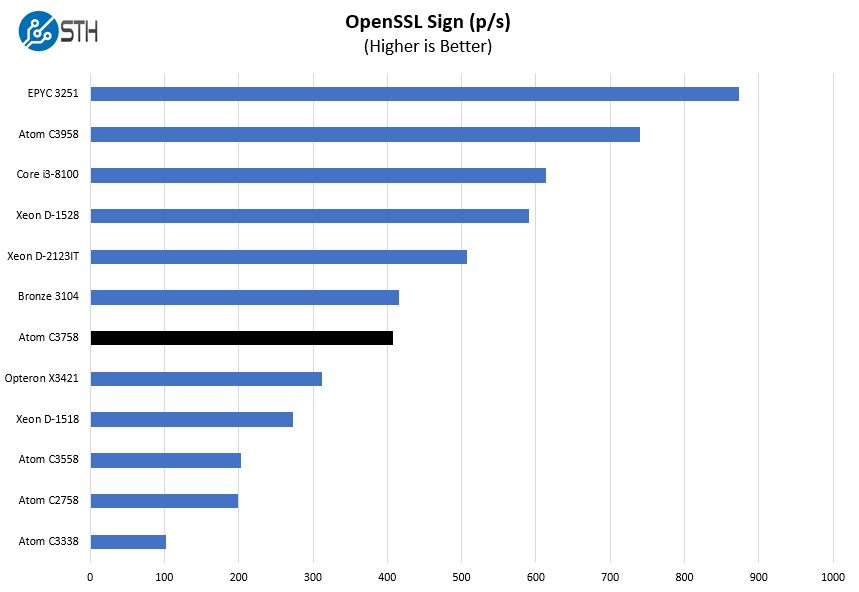
Here are the verify results:
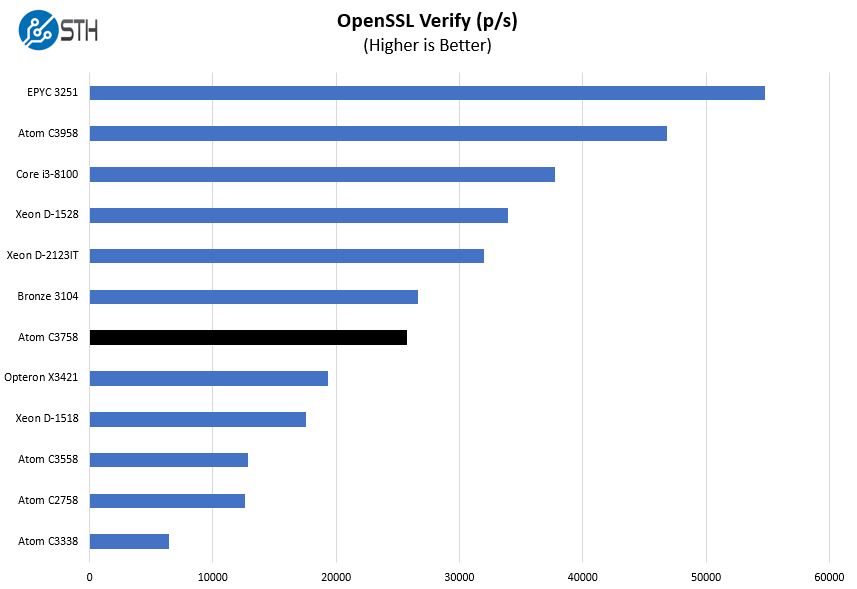
We also just wanted to point out that compared to the original FreeNAS Mini, which used the Intel Atom C2000 series, we get a lot more performance. The Atom C2000 is a 2013 era chip. The Atom C3000 is a 2017 era SoC. That puts us on track for a 2021 update from Intel, but it takes some time for the embedded market to catch up.
TrueNAS Mini X+ Storage Performance
For this, were using the WD Red Plus 10TB disks without caches in the TrueNAS Mini X+. Of course, there is a wide variability of performance based on what is used.
BlackMagic Disk Speed Test
This is a popular speed test in the video community. It shows whether a storage device is suitable for throughput required at a given video format. We use it in some of our M.2 SSD reviews such as our Intel 665p 1TB M.2 NVMe SSD Review and so we wanted to see how this NAS performed.
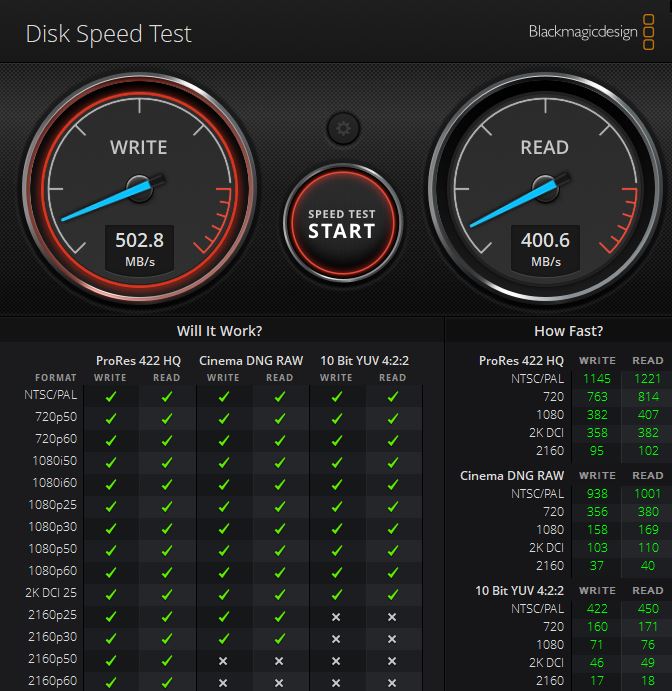
Using RAID-Z2 (suggested by TrueNAS) and iSCSI we saw the acceptable performance, but not necessarily able to cover all 4K use cases.
File Server Network Interface Performance
We tested the setup using both the onboard 10Gbase-T and the Cheliso SFP+ network interfaces.
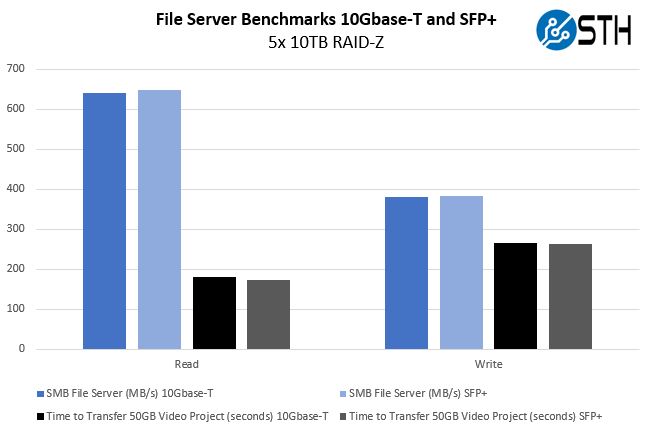
The Chelsio T520 SFP+ NIC proved slightly faster than the onboard networking. We also saw peak CPU loads here of 75% with the Intel 10Gbase-T and 68% with the Chelsio SFP+ while performance remained effectively even.
Overall, this is an Atom C3758 based NAS, so it performs about how we would expect. The key takeaway is that this is designed more for our lighter VM workloads instead of heavier converged type use cases. We tried running, under Linux, our main KVM virtualization suite we use for higher-end servers, but it basically does not run on a system like this as we got extremely low and inconsistent results. That is somewhat by design since it needs to cover systems with 128+ physical cores.
iXsystems TrueNAS Mini X+ Power Consumption and Noise
Power consumption was different than we had expected. From the iXsystems spec page we expected power consumption figures of:
“Diskless: 40W
With drives & 10G Add-on-card: 111W”
Fully loaded we saw 89W at idle in our test unit. With the WD Red Plus 10TB drives, optics, CPU, longer 10Gbase-T runs, and more under load we were able to exceed 200W in this system on 120V power. We are effectively testing a maximum configuration so one can consider our power consumption figures a worst-case type of scenario for the system except that one could use higher-power 7200rpm drives.
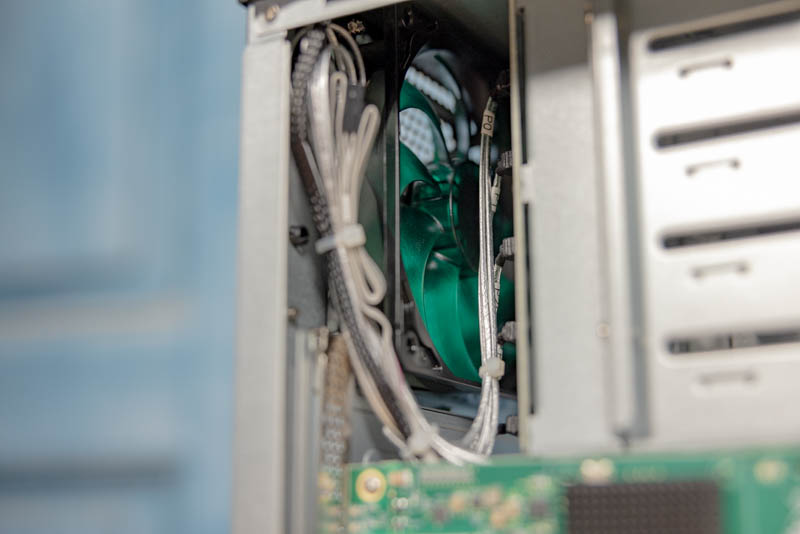
Even at idle in a 25dba room, we had 36dba at 1m in front of the chassis. Again, in a loud environment or in an equipment closet, this will not be noticeable. In a quiet environment, the fan noise is significant to where it as loud to me. Patrick, our editor-in-chief, did not believe me that it was this loud, so I shipped the unit to him and if you see this in the review, he agreed.
Next, we wanted to close with a discussion on market impact.




Nice review. Interesting product, especially because this integrator (or system builder) has chosen to use off-the-shelf parts with a minimum of custom modifications. To me that speaks of a platform that is easily supportable & fixable into the future by a tech savvy enduser.
As for all of the screws that were encountered…be thankful that some, many, or all of them were not rivets…because you would be really screwed in that case.
(all puns in this comment, bad or otherwise, are intentional)
Every time I said I really want a “consumer” ZFS NAS, people will point me to TrueNAS Mini, but the whole thing just isn’t anywhere near Synology or Qnap. And with the constant security problem Qnap is having ( And QT Hero supporting ZFS isn’t available on all Model ), it looks like for ZFS you either do it like a pros with TrueNAS or build yourself.
Otherwise you are left with BTRFS on Synology.
@Ksec
To be fair, many of the security problems QNAP is facing, is due to customer treating personal-clouds and forwarding ports to them, exposing them to the web, or using UPNP… Don’t expose it, and 99% of those problems go away.
NAS’s boxes are not hardened internet servers – unfortunately this is a problem that is caused by QNAPs own marketing and documentation promoting this, and for some reason it seems they’d rather play wack-a-mole with bugs/vulnerabilities and suffer the reputation damage, than to properly educate their owners.
Can you compare with https://www.synology.com/en-us/company/news/article/DS1621_Plus_PR/Synology%C2%AE%20Announces%20the%20Six-Bay%20DS1621+%20Featuring%20AMD%20Processor ?
@Kelv1n – I am not using Qnap or Synology, but I am curious to know how I can check if I have any forwarding ports open to web or enabled UPnP. Some local applications have port 8080 indication, but I don’t see them or any services listed in my Orbi router under “port forwarding.” Is 8080 port forwarding only local? Also, I think I have disabled UPnP on my router – – are there any other steps that I should be taking to ensure security? Should I blocking ports in my PC too, or just router?
I do not like iXsystem’s policy about their products.
It is impossible to buy the chassis only without motherboard.
If you are a system builder and you do not want to buy supermicro motherboard, you can not do it.
But the new chasis lokks good, and the extra 2 ssd slot is very usefull.
The cooling solution is poor, but with noctua coolers this can be solved.
Perfect build, did my own one with same mono, but a custom fit (low depth) rack case. Got 12 hdd slots (not hotplug and an awful lot more screws), a noctua cpu fan and 3 120mm one – hdd are the loudest part.
Thanks for the review and the components are the ones I chose myself
@csp the chassis is available separately as the ablecom cs-m55
Truly great reviews. I’m using QNAP, Synolgy since ever & recently I started using DIY TrueNAS. Although QNAP & Synology are using relatively lower end CPUs like i5 & Xeon D compared to the Dual Xeon E5-2690V3 w 64GB ECC RAM their performance is superior compared to TrueNAS. They can easily saturate the 10Gb connection while TrueNAS has an erratic performance. I tried all the tweaks & tunable on the RAID-Z Pool (24HDD of 14TB configured as 4VDEV of 6HDD Raid-z) to improve performance but speed is nothing compared QNAP & Synology. To confirm it is not a hardware limitation I loaded Windows Server 2019 on the same hardware configured a RAID-5 Share and the throughput was absolutely amazing hence it is a TrueNAS issue. I wish someone can resolve this mestry
My ZFS Poll setting “Disable Duplicate & ATime used a 1GB with standard sync, SMB share, enabled tunable & jumbo traffic”
Again Thanks a million for the great review
Is this case not just that one Supermicro ITX case? Looks literally identical, just with a different front bezel.
@michaelp
Ablecom does not sell under 100 pcs.
I saw a YouTuber Tommy L say this was super quiet. He’s showing “quiet” in a room that looks like it has a 40db floor. I would never have thought that was a thing until I saw this.
If only one could purchase the chassis separately. Out of all the cases available in the market this and the 8-bay one look the most promising (the 4-bay one is also great but a bit small). I know it is an Ablecom product but good luck finding someone willing to sell you 1-2 units.